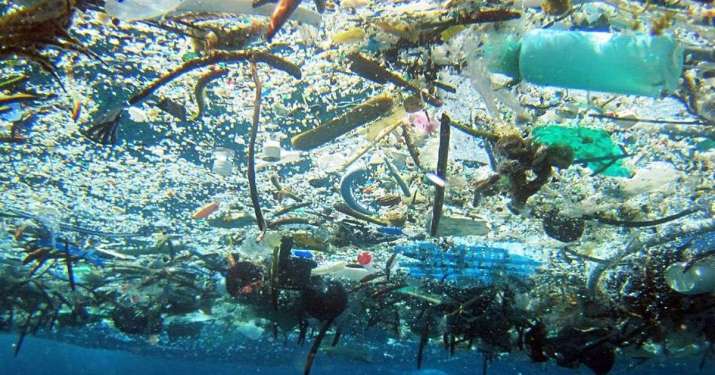
After five years of tests and trials, scientists on Saturday launched a revolutionary new marine waste collection system from San Francisco Bay aimed at tackling the growing environmental crisis of plastic waste accumulating in the Pacific Ocean—the now-infamous Great Pacific Garbage Patch.
The ultimate objective of the project—its initial incarnation has been dubbed System 001—is to remove plastic debris in the North Pacific Ocean, with the goal of collecting five tonnes of plastics each month. Cleanup System 001 was launched on 8 September toward an offshore location 240 nautical miles away, where it will conduct a two-week final trial before heading toward its primary target, the Great Pacific Garbage Patch, some 1,200 nautical miles away.
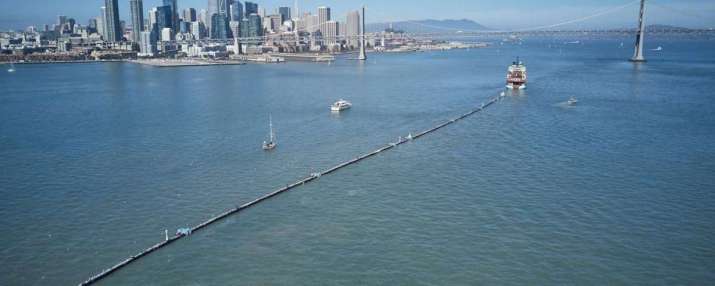
“After the trials have concluded, System 001 will be towed the remaining 1,000 nautical miles to the Great Pacific Garbage Patch,” said The Ocean Cleanup, the non-profit organization behind the project. “This will be a long journey, as the average tow speed is 2–4 knots. We expect that the trip to the patch will take approximately two to three more weeks. Once it arrives, the cleanup will commence.” (The Ocean Cleanup)
The initiative is the brainchild of a resourceful entrepreneur from the Netherlands, 24-year-old Boyan Slat, who is confident that his invention can halve the quantity of plastic waste floating in the Pacific in as little five years. Slat’s startup, The Ocean Cleanup, founded in 2013, has developed a passive collection system of floating booms to be arranged in kilometer-long U-shaped arrays that use the ocean’s natural currents to skim swathes of waste from the ocean’s surface to collection points, where it can be extracted and shipped back to shore for recycling.*
“I am incredibly grateful for the tremendous amount of support we have received over the past few years from people around the world, that has allowed us to develop, test, and launch a system with the potential to begin to mitigate an this ecological disaster,” said Slat. “This makes me confident that, if we manage to make the technology work, the cleanup will happen.” (The Ocean Cleanup)
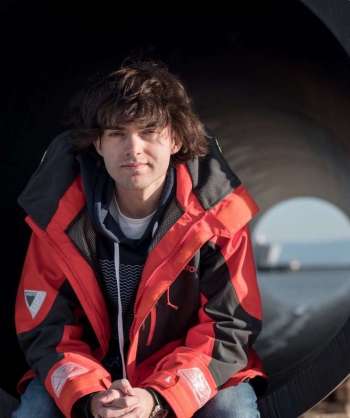
The Great Pacific Garbage Patch, an ugly reminder of humanity’s willful neglect of the natural environment, is big. Really big. Estimates of its extent range from the size of Texas to greater than the entire continental United States. Also known as the Pacific trash vortex, the garbage patch is really a loosely packed mass of manmade waste in the central North Pacific Ocean characterized by high concentrations of plastics, chemical sludge, and other debris gathered up and contained within the currents of the North Pacific Gyre, a system of circulating ocean currents. Spread over an area estimated at between 700,000 and 15 million square kilometers, the size of the Great Pacific Garbage Patch is difficult to gauge—most of the debris is composed of tiny long-lasting plastic particles suspended at or just below the surface of the ocean, while larger pieces that are visible to marine traffic are uncommon, making aircraft or satellite surveillance extremely difficult. The extent of the patch also depends on the level of plastic concentration used to define the affected area.
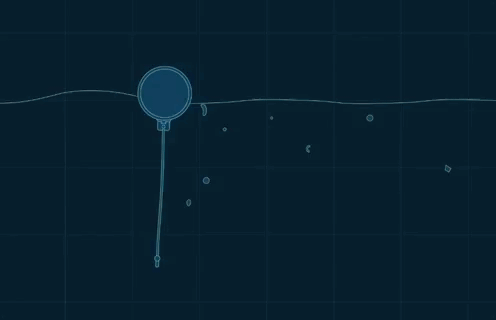
The Ocean Cleanup expects to deliver its first payload of waste plastics collected from the ocean within six months of deployment, marking the first-ever successful collection of free-floating plastic at sea. The recovered waste will be recycled into new products and the proceeds from their sale used to fund further cleanup operations.
“As with any novel technology, success is not guaranteed, but this is exactly why we test, test, and test again,” said The Ocean Cleanup, indicating the the technology is subject to change and redesign as the experiment develops. “Until the final risks and uncertainties have been mitigated, System 001 is still labeled a ‘beta system.’” (Business Insider)
If the maiden voyage of System 001 is a success and the project continues to receive sufficient funding, The Ocean Cleanup aims to assemble a fleet of 60 systems by 2020, which it projects can reduce the Great Pacific Garbage Patch by half over a five-year period. This target is just a fraction of The Ocean Cleanup’s ultimate goal to reducing the amount of plastic waste in the world’s oceans by at least 90 per cent by 2040.
Sadly, the Great Pacific Garbage Patch is not the only marine trash vortex—merely the largest. Similar vortices of waste exist in the Atlantic and Indian Oceans, as well as smaller marine regions, such as the North Sea. Each year, an additional 8 million tonnes of plastic waste finds its way into the world’s oceans, “which is the equivalent volume of two Empire State Buildings every week,” emphasized Slat. (Deutsche Welle)
The quantity of debris in the Great Pacific Garbage Patch has accumulated because much of it is not biodegradable—many plastics do not completely break down, but simply degrade into smaller particles. Some of these long-lasting plastics end up being consumed by marine animals and their young, including fish, whales and dolphins, turtles, seals, and sea birds, ultimately impacting the entire food chain. At the microscopic level, the floating debris can absorb organic pollutants from seawater, which can also be passed on during consumption by animals. In addition to the dangers to wildlife, many of these fish are consumed by humans, resulting in human ingestion of toxic chemicals. Research indicates that plastic marine debris may affect more than 267 species worldwide.
Slat observed that the launch was “an important milestone, but the real celebration would come once the first plastic returns to shore. For 60 years, mankind has been putting plastic into the oceans; from that day onwards, we’re taking it back out again.” (The Ocean Cleanup)
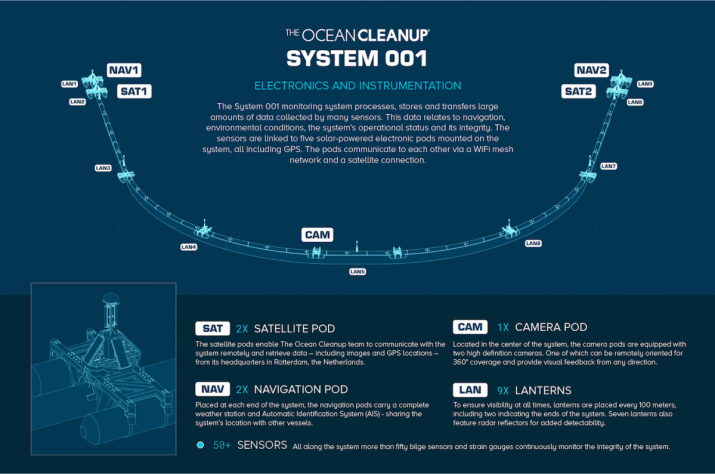
* Dutch Entrepreneur Plans Radical Clean-up of the Great Pacific Garbage Patch (Buddhistdoor Global)
See more
The Ocean Cleanup
The Ocean Cleanup (Facebook)
The Ocean Cleanup (Twitter)
The massive plastic-cleaning device invented by a 24-year-old is headed out to the Great Pacific Garbage Patch — here’s what the launch looked like (Business Insider)
Green entrepreneur sets sights on Great Pacific Garbage Patch (Deutsche Welle)












